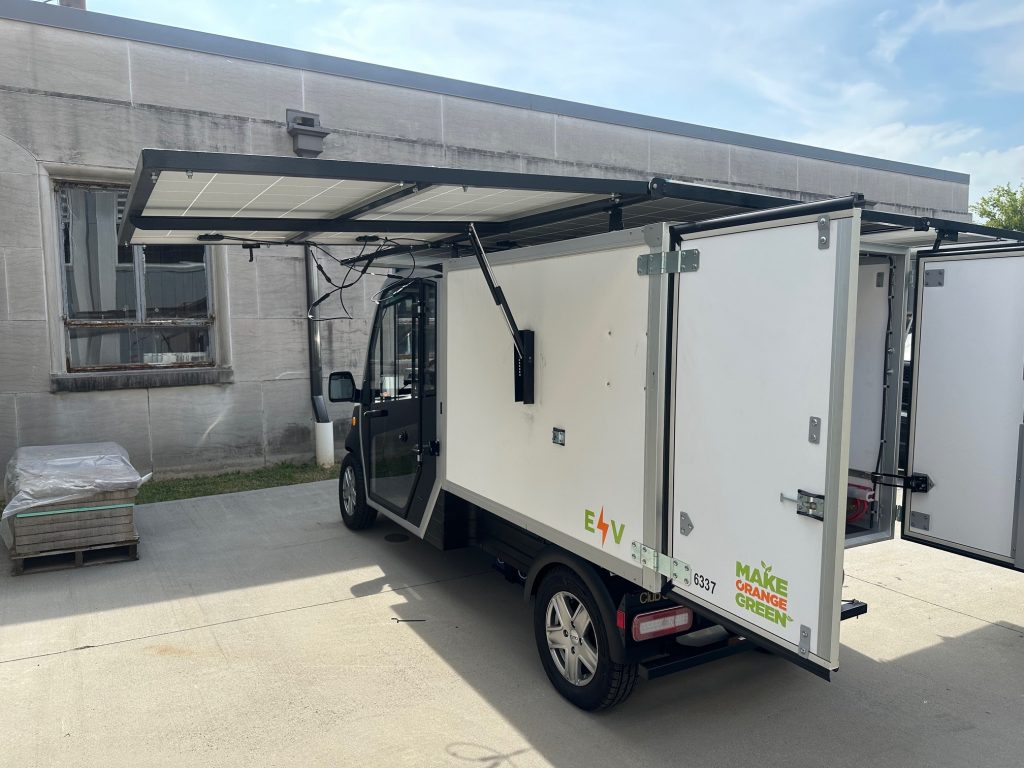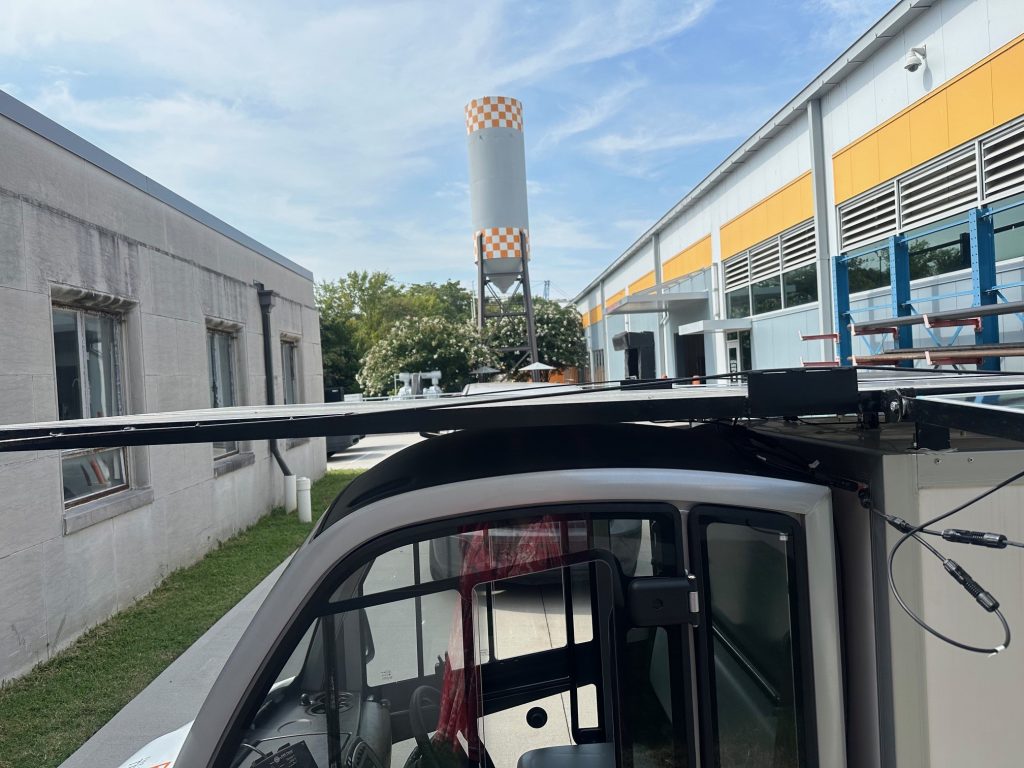Story by: Ella Kelley, FS Comm & Info Student Assistant
About a year ago, Director of Utilities and Energy Wes Willoughby had what he referred to as “a crazy idea” – developing a mobile solar station to power events on campus. In collaboration with the UT Office of Sustainability, Utilities and Sustainability regularly work hand-in-hand to think of new ways to use solar power on campus.
In 2023, fossil fuels made up around 60% of the electricity generated at utility-scale electricity generation facilities in the United States. 21.4% of the electricity was from renewable energy sources, with 3.9% from solar. Generating electricity from fossil fuels is expensive, negatively impacts the environment, and increasingly depletes finite resources. On the other hand, solar energy is clean and renewable, since it comes from the sun. Solar energy reduces air pollution, fights global warming, and decreases the amount of finite resources used. As the industry grows, solar energy is becoming more affordable and easy to maintain. While solar energy has a steep initial cost, it is generally thought to save money long term.
As part of an effort to bring more sustainable practices to the university, Utilities Services decided to construct a mobile solar station by outfitting a Club Car with solar panels. This solar station was created to provide alternative options for energy usage on campus, specifically for small outdoor events that do not have easy access to electricity. Now, instead of having to put down cords from all over campus and find a way to connect to electricity, events can be powered by connecting to this car. This car also serves as an example of the Facilities Services department’s efforts to be more environmentally friendly. Willoughby said the solar station is an educational tool to teach students more about solar energy and alternative energy options.

Wayne Stalans, the Utilities Distribution Superintendent, said this project is important because a lot of people do not know how solar energy works or what can be done with it.
“That’s one reason to build. A lot of people know there’s solar out there, but a lot of people don’t know what you can do with it. They have solar panels, they do this, but you have to have a controller. You have to do all this – like we had to do our research to figure out how to make that controller do what we wanted to do,” Stalans said.
The solar station car will include a digital read up on the side so that students and other passersby can see how it works. Most solar panels are made out of silicon, which is a semiconductor that can absorb sunlight and convert it into electricity. The read up on the side of the solar station will explain how this process works and show what is coming in and what is going out of the solar panel.
As Director of Utilities and Energy, Willoughby has been looking for ways to incorporate more sustainability efforts through energy usage on campus.
“We’re constantly looking at ways we can save, we can cut back on electric by getting more efficiency, and whatever we can do to promote that,” Willoughby said.
The process of making the solar station has taken about a year so far. It took some time to get the vehicle and the parts to build the solar station.
“Then we worked on it when we weren’t busy,” Willoughby said. “So it might have only been an hour a day, come in, do something real quick.”
To create the solar station, the project team had to put in the electrical interface, the charger, and the inverter. They had to attach steel structures below the vehicle to hold the storage batteries and had to install the solar panel controller. Finally, they built frames for the solar panels and mounted them to the car.
“There’s a lot of pieces that – people think you can just put a solar panel on and you got it, but there’s a lot of other pieces in there to get it to electric,” Willoughby said.
The car was fabricated by the Steam Crew and outfitted by Electrical Services. Among the people that worked on the project are: Wes Willoughby, Wayne Stalans, Cesar Penalba, Mike Billington, Justin Brooks, Robby Huggins, Martin Pearson, Cody Smith, Steven Bielecki, Gavin Ramsey, and Radovan Psar.
“We got the electrical group, electricians that helped us put it together, because we did some of the engineering, and other groups did the mechanical part of it, the structural part of it. So it was a combined effort for all those jobs,” the Assistant Director for Engineering and Projects, Cesar Penalba, said.

At this point, the solar station is being tweaked and tested. The vehicle is finished, but there are a few small things that need to be fixed before it is ready to be used. Additionally, they are waiting for graphics to go on the side of the car. They want to have information about Utilities on the car to encourage students to learn more about Facilities Services at UT.
The project team is eager to see how the solar station is received once it is fully ready for use. If there is a high demand for it and potential for its use in different places, they hope to take on similar projects in the future. Regardless, Facilities Services has been inspired by this project to focus efforts towards solar energy.